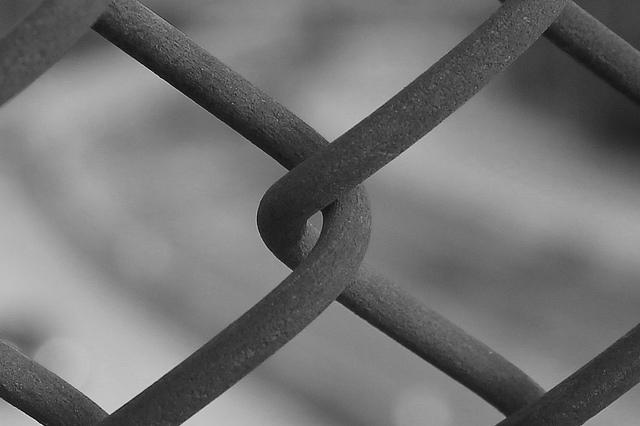The link between crime and terrorism was discussed during a seminar at the National Security Summit that we attended recently. The link has attracted broad attention overseas (such as here), but only limited discussion in Australia. The seminar sought to change that by discussing the organised crime–terrorism nexus and other topics, including border security and cyber-security.
During the day, we facilitated two roundtables (under Chatham House rule) that asked how Australian governments could do more to disrupt the links between organised crime and terrorism. Two groups gathered, including some eminent academics and practitioners from across the national security community. What follows here is a summary of the discussions and some areas that we think are worthy of further examination by Australian policymakers.
The reasons why this topic is so important can be found in the May 2015 report from the Australian Crime Commission, Organised Crime in Australia. This report reveals that enhanced counter-terrorism efforts across the country are helping to identify linkages between terrorism and both organised crime and volume crime (like theft). That evolving challenge was identified as a priority for Australian law enforcement by speakers at the Summit.
Prominent international examples show how vexing that link can be for state actors. For instance, the Taliban tax and participate in Afghanistan’s opium trade, which continues to grow despite a US$7.6 billion effort to reduce it. On the other side of the world, the Revolutionary Armed Forces of Colombia–People’s Army (FARC) buy weapons, and equip and recruit soldiers using profits from cocaine sales, despite a decline in Colombia’s production of the drug.
Australia’s security challenges are in no way comparable to those of Colombia or Afghanistan, but there are still concerns that money laundering through organised criminal groups in Australia is financing terrorist activities overseas, that the purchase of some illicit goods here finances terrorism, and that terrorists could use criminal services here or overseas to obtain fake IDs, passports and weapons.
That terrorists and organised criminals can derive some benefits from interactions with each other was a point made by some roundtable participants. While the idea wasn’t unanimously accepted among the participants, it was established that terrorism and organised crime have a significant commonality of interests. Both aim to exploit similar vulnerabilities in society, such as public discontent or security loopholes—they just want to exploit them for different ends. This point was made in the Financial Action Task Force’s February 2015 report Financing of the Terrorist Organisation Islamic State in Iraq and The Levant (ISIL), in which ISIL’s sophisticated extortion racket of robbing, looting and demanding a portion of the economic resources in areas where it operates was described as similar to how some organised criminal groups generate funds.
Following this theme, some participants argued that we can’t underestimate the pragmatic relationship between organised crime and terrorism. ‘Marriages of convenience’ like this help terrorists to fund the activities of both groups, and allow organised criminals to engage clients who similarly don’t wish to attract the attention of law enforcement. Expert participants observed that if Australian law enforcement agencies want to counter terrorism, they could start by furthering efforts to reduce the power and resources of organised crime.
This discussion created a loose consensus around the idea that some of the tools used to fight terrorism might also be applicable to tackling organised crime. For example, it might be worth extending delayed notification search warrants or passport control provisions recently introduced in new counterterrorism legislation to organised crime cases.
Another discussion point was the incomplete comprehension within government about the capabilities of all relevant departments and agencies in the fight against organised crime, including how ‘social service’ agencies could best be leveraged. Such an understanding is needed to facilitate cooperation and coordination of a whole-of-government approach to organised crime and terrorism.
The participants also discussed the need to closely examine the prison system’s role in facilitating organised crime and radicalisation. Discussion started with reference to the US, where criminal gangs are more than just a means of protection in jail, but rather have become highly sophisticated organisations with strategies and business models. While that issue receives less attention, we also understand that some individuals become more, not less, radicalised in Australian jails. So it’s necessary to support ongoing and new efforts to prevent radical and criminal influences from dominating susceptible inmates, such as appropriate supervision and preparing prisoners for a lawful life beyond bars. One idea raised was to identify alternatives to imprisonment for some offenders in order to minimise their contact with radicalised individuals in prison.
We were left with a key question after the discussion: what’s the depth of the crime–terrorism problem? It’s clear that the links between the two exist, and that such links challenge our national interests and security. This has been reinforced recently by NSW Police Deputy Commissioner Nick Kaldas in his testimony to the Lindt Cafe inquest. But it was hard to say—based on the evidence presented—just how often terrorists and criminals interact here in Australia, or to identify the extent or importance of their interaction with each other.
Assessing those issues would help the Australian public better understand the nature of the threat, and also help make the case if further measures are needed to help law enforcement and other services to break the link between the two.
